Mastering Card Counting and Strategy in Double Deck Blackjack
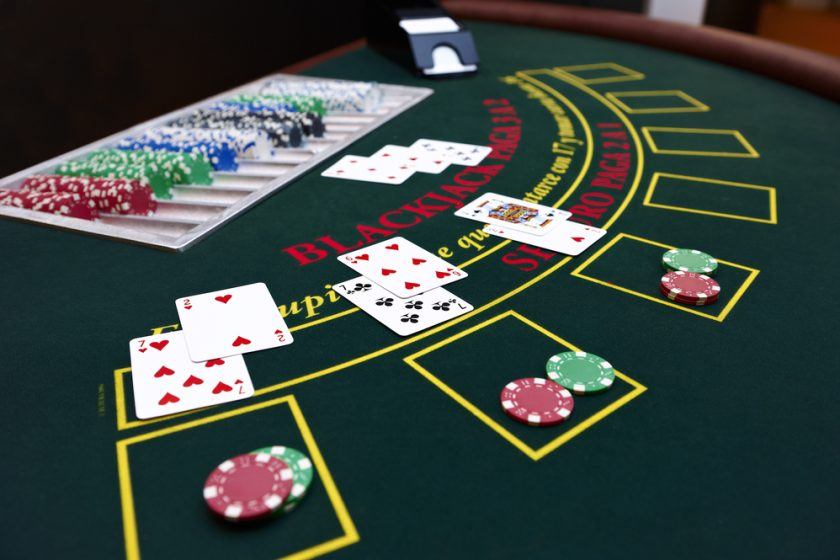
Key Concepts in Double Deck Blackjack
Double Deck Blackjack stands as a favorite among seasoned casino players due to its balanced gameplay and strategic depth. Throughout this comprehensive guide, you'll uncover:
- Essential basic strategy moves tailored to double deck play.
- Proven card counting systems for enhanced odds.
- Smart bankroll and betting approaches.
- Rule variants that can tilt the game in your favor-or against you.
- Costly mistakes to avoid at the tables.
Double Deck Blackjack bridges the gap between the traditional Single Deck format, now rare, and the more common multi-deck (six or eight decks) games. Its unique characteristics demand precise tactics for players who want to tip the scales.
What Makes Double Deck Blackjack Different?
In this format, two standard 52-card decks (totaling 104 cards) are used. This setup originated as casinos sought to increase deck complexity without sacrificing too much player appeal. Double deck tables typically utilize a dealing shoe, though hand-dealt versions exist, and cards are usually shuffled when around 60-75% of the decks have been played-this is called “deck penetration.”
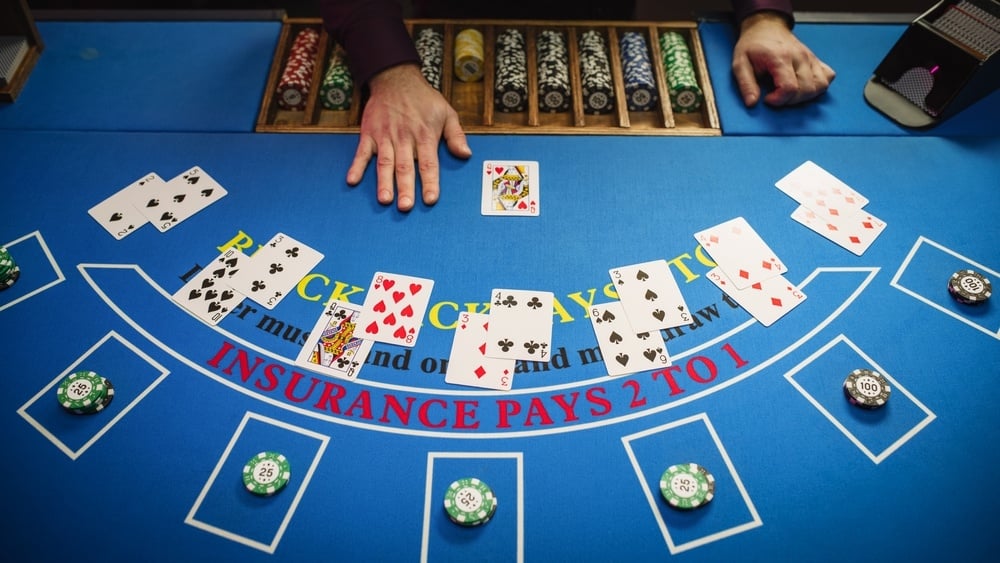
Title Image Credit: Kitreel/Shutterstock
Comparing Double Deck to Single and Multi-Deck Games
Let's break down how double deck stacks up to other blackjack variations:
- Card Counts: Double deck uses 104 cards, compared to 52 in single deck and upwards of 312 in six- or eight-deck games.
- House Advantage: The casino edge in double deck is generally smaller than in multi-deck games, but not as low as single deck.
- Card Counting: More effective in double deck than multi-deck, though single deck remains the best for counting.
- Rule Variations: Casinos may alter rules for splits, doubling, surrender, and dealer behavior.
Common variations to look for include:
- Does the dealer hit or stand on soft 17 (H17/S17)?
- Is doubling after splitting (DAS) permitted?
- Can players surrender hands?
- Are aces eligible for re-splitting?
- What is the blackjack payout-3:2 (ideal) or 6:5 (avoid)?
House Edge in Double Deck Blackjack: How Rules Tip the Scales
The house edge for double deck play sits between 0.2% and 0.7% when players use optimal strategy, typically outperforming six-deck games (which range from 0.5% to 1.0%). Key rules that directly impact your odds include:
- Dealer Stands on Soft 17 (S17): Decreases house edge by approximately 0.2%.
- Doubling After Split (DAS): Cuts the edge by about 0.14%.
- Late Surrender (LS): Reduces house edge by 0.08%.
- Re-Splitting Aces: Takes off another 0.08%.
- Blackjack Pays 3:2 vs. 6:5: 6:5 dramatically increases the casino’s advantage by 1.4%.
Pro Tip: Always select tables with a 3:2 payout on blackjack-6:5 payout games negate the benefits of the format.
Optimal Double Deck Basic Strategy
Succeeding at double deck starts with strict adherence to the best mathematical play for every scenario. While strategy charts exist for every deck configuration, ensure yours is specifically for double deck rules.
Key Moves for Hard Hands (No Ace or Ace counts as 1):
- Hit on hands of 8 or less.
- Stand on 17 or higher.
- With 9: Double against dealer’s 3-6, otherwise Hit.
- With 10-11: Double against 2-9, otherwise Hit.
- With 12-16: Stand against 2-6, otherwise Hit.
Best Actions for Soft Hands (Ace as 11):
- Hit soft 17 or lower if you can’t double.
- Stand on soft 19 or higher.
- Soft 18: Stand if dealer has 2-8, otherwise Hit.
Pair Splitting Guidelines:
- Always split Aces and 8s.
- Never split 10s, 5s, or 4s.
- Split 2s and 3s versus dealer 2-7.
- Split 6s versus 2-6.
- Split 7s versus 2-7.
- Split 9s versus 2-6 and 8-9.
Card Counting Techniques for Double Deck Play
With fewer cards in play, counting in double deck blackjack is more influential. The Hi-Lo system is favored for its simplicity and efficiency:
- 2 through 6: Count as +1
- 7 to 9: Count as 0
- 10 through Ace: Count as -1
How to Use:
1. Start your count at zero with a fresh shuffle.
2. Adjust the running count as each card is revealed.
3. Divide the running count by the estimated decks left to get the “true count.”
4. Increase bets when the true count is high; lower them when it drops.
Double Deck Reminders:
- The count changes quickly-stay alert.
- “Deck penetration” is vital. Target games that deal at least 65% of cards before shuffling.
- Each shuffle resets your count to zero.
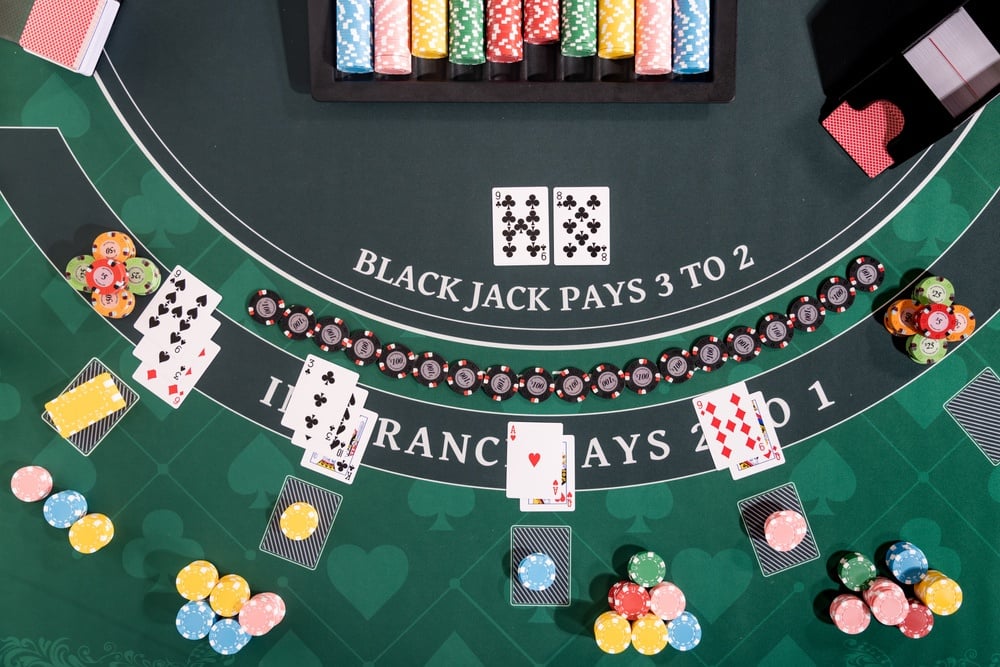
Title Image Credit: Netfalls Remy Musser/Shutterstock
Refining Your Double Deck Strategy: Advanced Methods
Beyond the basics and counting, experienced players employ the following enhancements for a sharper edge.
Split and Stand: Advanced Situational Insights
- With a positive count (+2 or more), splitting 10s against a dealer’s 5 or 6 may be advantageous.
- In very negative counts (-3 or less), do not split 9s vs. a dealer 7.
- Adjust your splitting based on visible cards and remaining deck composition.
Remember: More splits mean greater impact from the current deck-only split when the count supports it.
Soft 17 Rules: How Dealer Actions Affect Your Approach
- If the dealer hits on soft 17 (H17), consider doubling more aggressively when you have 11 or a soft 18 against their 6.
- If the dealer stands on soft 17 (S17), you get a roughly 0.2% advantage-adjust doubles accordingly.
- In H17 games, stand with soft 18 vs. a 2 instead of doubling.
Customizing for Rule Variations
- No doubling after splits? Avoid splitting hands like 5-5.
- No re-splitting allowed? Hold back on initial splits with less flexible pairs.
- No surrender? Prepare to play through tough hands like hard 15-16 against strong dealer upcards.
Choosing the Right Table: Identifying Profitable Double Deck Games
A little observation can go a long way:
Recognizing Favorable Deal Practices
- Hand-dealt games often provide better penetration.
- Follow where the dealer places the cut card-deeper is better for counters.
- Watch if the dealer shuffles after each hand, or if play continues until the cut card appears.
Sought-After Table Features Include:
- Dealer stands on soft 17 (S17)
- Doubling after split allowed (DAS)
- Re-splitting Aces permitted
- Late surrender available
- 3:2 blackjack payout (absolutely avoid 6:5)
Essential Gameplay Tips for Better Results
Strategic play is more than just following charts. Integrate these tips for better overall performance.
Skip Insurance Bets
The insurance option, offered when the dealer shows an Ace, has a steep house edge (approx. 2.8% in double deck). Only consider it if you’re an expert card counter-and only when the true count is +3 or above. For everyone else: never take insurance!
Avoid Side Bets
Side bets like 21+3, Perfect Pairs, and Lucky Ladies are enticing but can inflate the house advantage from 4% to a staggering 15%. For long-term profitability, stick to the main game.
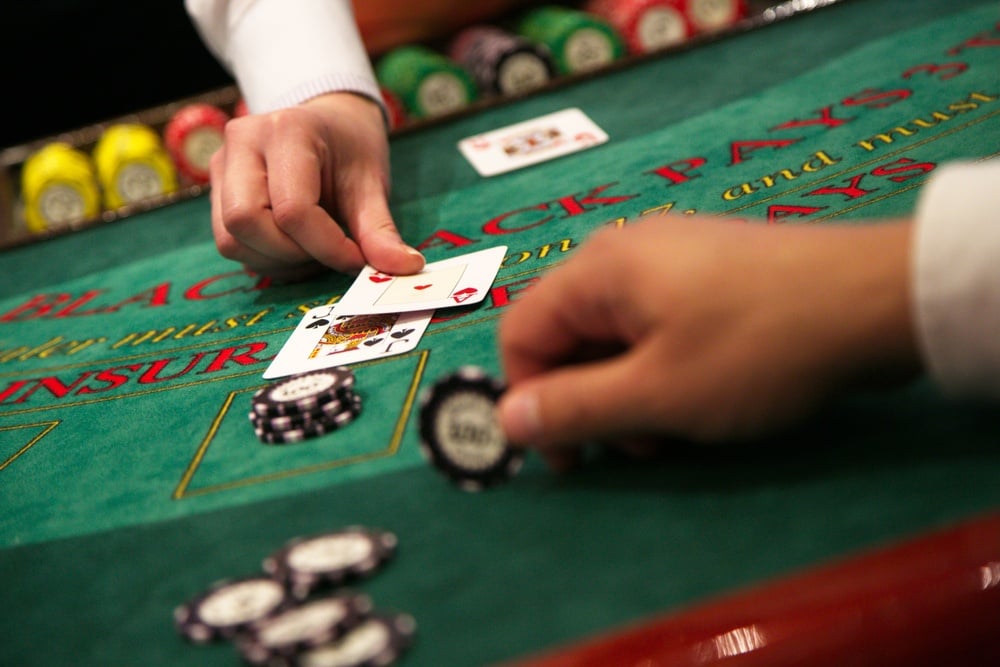
Title Image Credit: juliannedev/Shutterstock
Spotting Dealer Habits
On occasion, vigilant players can notice dealer customs that offer insights:
- Consistent cut card depth.
- Potential hole card flashes during dealer checks for blackjack.
- Shuffle routines that clump certain cards.
These can sometimes provide a minor tactical edge.
Playing Double Deck Blackjack Online: What Changes?
The digital experience for double deck blackjack is increasingly popular but presents key differences to traditional tables.
What to Expect:
- Continuous shuffling means card counting strategies have little effect.
- Online rules are published and consistent.
- Bet minimums are lower, and gameplay is often much faster.
Online Double Deck Best Practices:
- Rely rigorously on basic strategy charts.
- Select games with the most favorable rules (S17, DAS).
- Look for casino bonuses eligible for blackjack play.
- Feel free to refer to strategy resources mid-game-there’s no in-person scrutiny online.
Online vs. Live: The Biggest Contrasts
- Card counting is ineffective except in some live dealer variants.
- No possibility to read dealer tells.
- Game outcomes and shuffles are fully standardized.
- Lower stakes and more rapid play boost session volume.
International Rules and How to Adjust Your Play
Double Deck Blackjack isn’t the same worldwide. Here’s what to look out for:
Common Global Variations
- European “No Hole Card” Rule: Dealer doesn’t reveal their full hand until players have acted, increasing risk for the player.
- Australian Pontoon: Shares many traits with double deck blackjack but uses unique language and slightly altered rules.
- Spanish 21: Sometimes played with two decks, but all 10s are removed, vastly shifting odds and best play.
Adjusting Strategy in Different Regions
- European tables: Be more cautious about doubling or splitting against the dealer’s Ace.
- Macau tables: Expect frequent 6:5 payouts-adjust strategy and only play if other player-friendly rules are present.
- Australia’s Pontoon: Learn specific hand values and payout rules before playing.
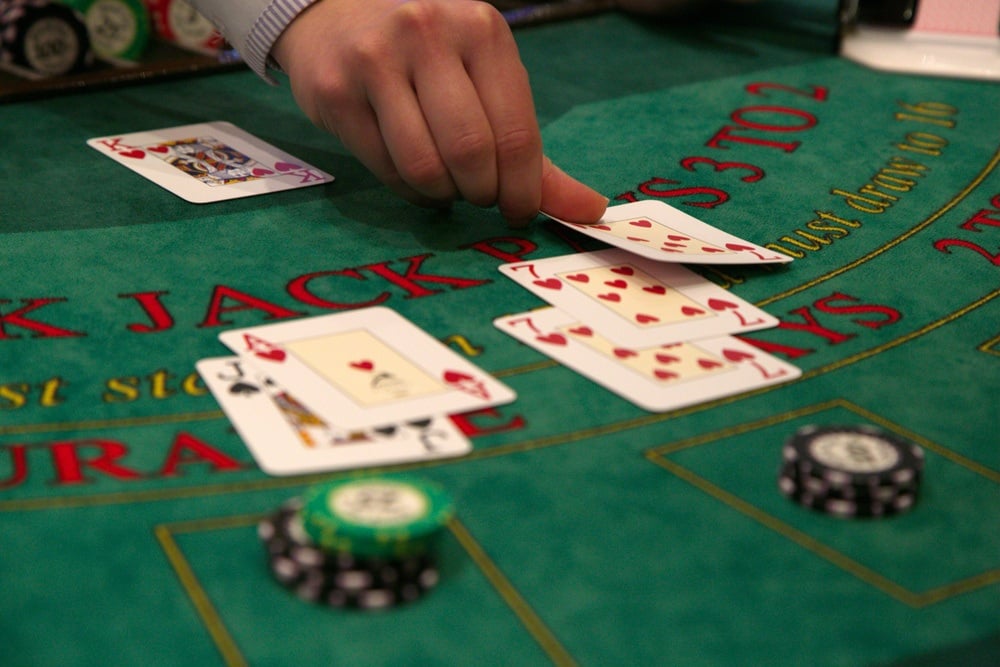
Title Image Credit: Kitreel/Shutterstock
Expert Approaches and Special Techniques
For players who want to take their game to the highest level, consider the following insights:
- Focus your efforts on tables with at least 65% deck penetration.
- Optimal tables allow S17, DAS, and late surrender (LS).
- Beginners can use simple systems like Ace-Five for a quick edge.
- “Wonging”-or table hopping only when the count is favorable-is a powerful (but sometimes restricted) advantage play.
Advanced Strategies in Action
Some pros use the following elite tactics:
- Shuffle Tracking: Monitoring specific groups of cards through the shuffle.
- Ace Sequencing: Watching for patterns that reveal when aces are likely to appear.
- Team Play: Coordinating with others to monitor more tables and share information on hot decks.
These require dedication and practice, but can produce substantial long-term results.
Double Deck Blackjack Strategy FAQs
What bankroll size should I bring for double deck blackjack?
Casual basic strategy players should aim for at least 50-100 times their average wager. Card counters will need a bigger safety net-typically 200-300 times their largest bet to withstand swings.
How is double deck play distinct from other versions?
Double deck offers a sweet spot between low house edge, good penetration, and practical card counting, with often more advantageous rules than standard single deck or multi-deck games.
Is card counting worth it in double deck blackjack?
Absolutely. Lower deck quantity amplifies the impact of each card, making card counting especially effective-provided you play where penetration is deep, rules are fair (S17, DAS, 3:2 payout), and you can employ the strategy undetected.
What does the “777 rule” mean in blackjack?
This refers to a rare bonus bet where three suited 7s in a player’s hand trigger a special payout. While sometimes lucrative, such side bets usually favor the casino and aren’t recommended for serious players.
What is involved in “doubling” in blackjack?
“Doubling down” allows you to increase your bet after seeing your initial cards, in exchange for committing to take exactly one more. Progressive betting systems that double your stake after a win/loss or “Double Exposure” blackjack are other related terms.
How do you deal double deck blackjack?
- Shuffle both decks together thoroughly.
- Let a player cut the deck.
- Insert the cut card about one-third from the back.
- Deal two cards face-up to each player, and one up plus one down to the dealer.
- Begin play from the dealer’s left.
- Reshuffle once the cut card appears.
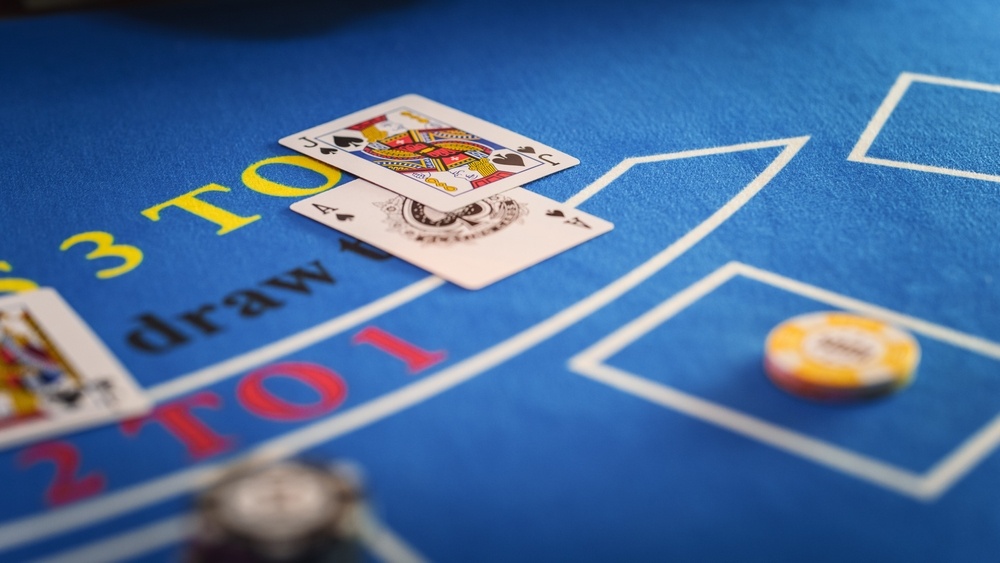
Title Image Credit: Kitreel/Shutterstock
Is double deck blackjack preferable to other versions?
In many cases, yes. Double deck offers a smaller house edge and more opportunities for advantage play compared to multi-deck shoe games. While not as statistically ideal as single deck (which is rare and often poorly ruled), a well-ruled double deck game is usually the best easily accessible choice for savvy players.
Conclusion: Your Blueprint for Success in Double Deck Blackjack
Double Deck Blackjack remains a top choice for strategic players in land-based and online casinos alike. By mastering both the fundamentals and advanced strategies described here, you put yourself in the best position to minimize the house edge and potentially flip the odds in your favor.
Remember these essentials:
- Choose games paying 3:2 for blackjacks.
- Seek out S17 and DAS tables.
- Always reference double deck basic strategy.
- Learn and apply effective card counting.
- Avoid insurance and side bets.
- Manage your bankroll with discipline.
Whether you play for fun or with a professional edge, double deck blackjack offers one of the most exciting and potentially rewarding experiences on the casino floor. Good luck at the tables!

Title Image Credit: juliannedev/Shutterstock













